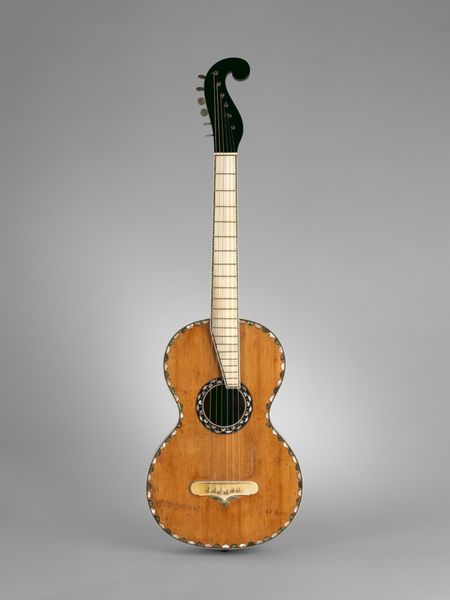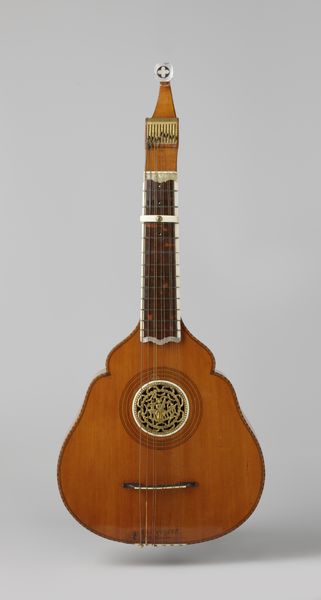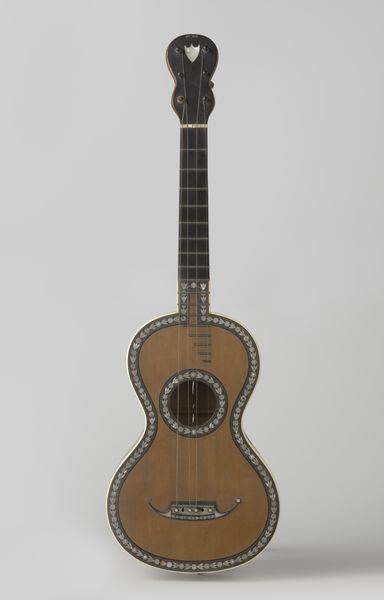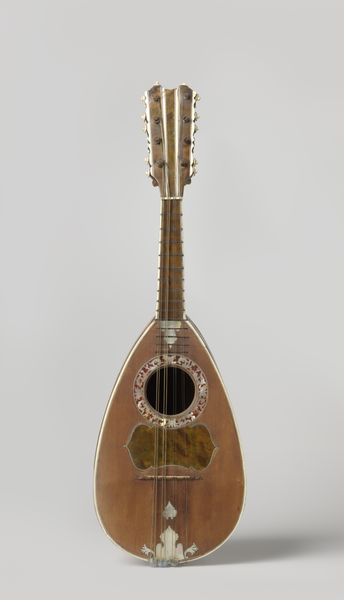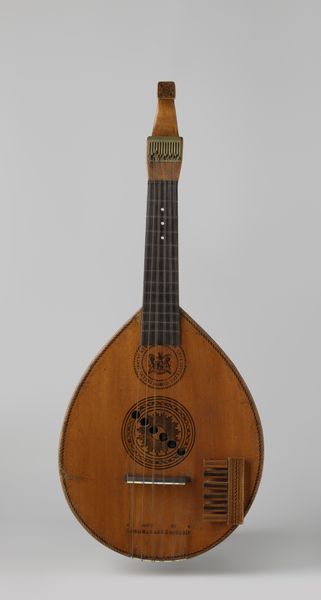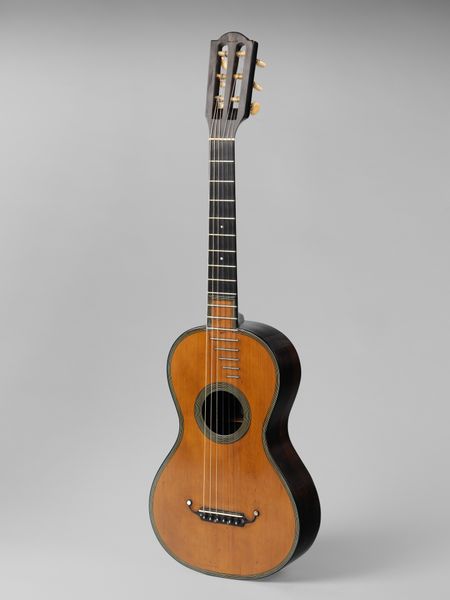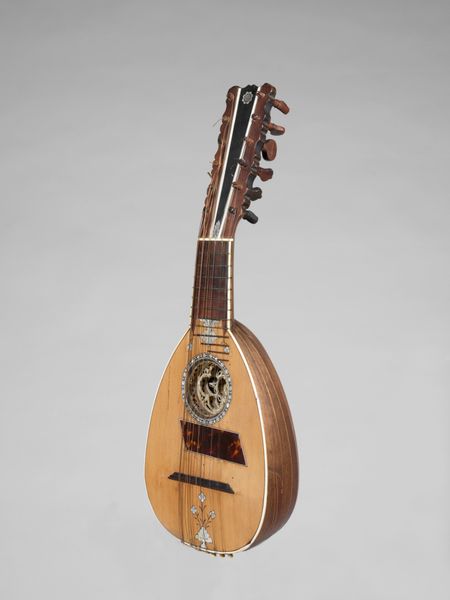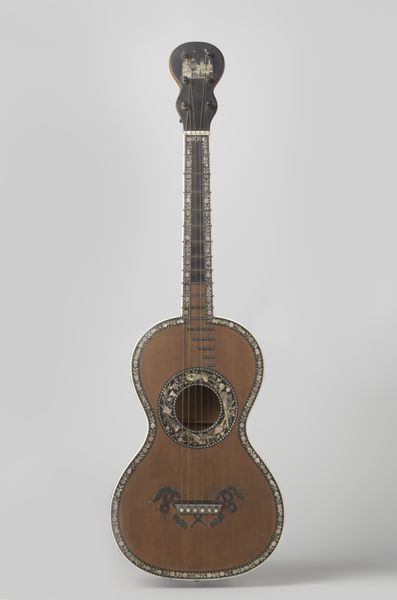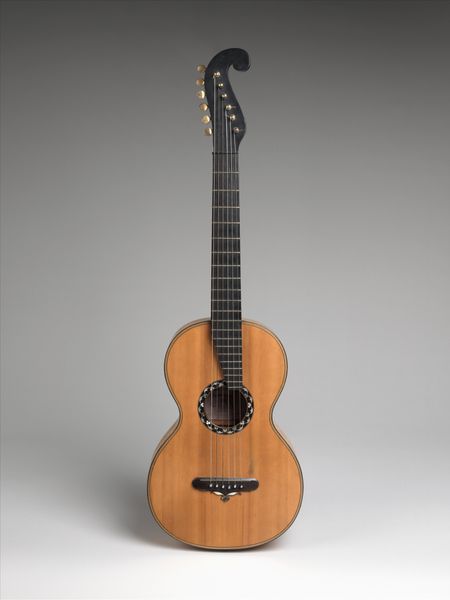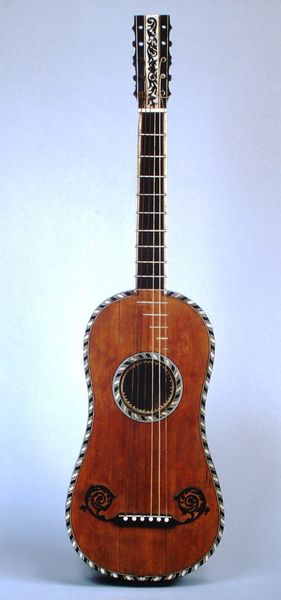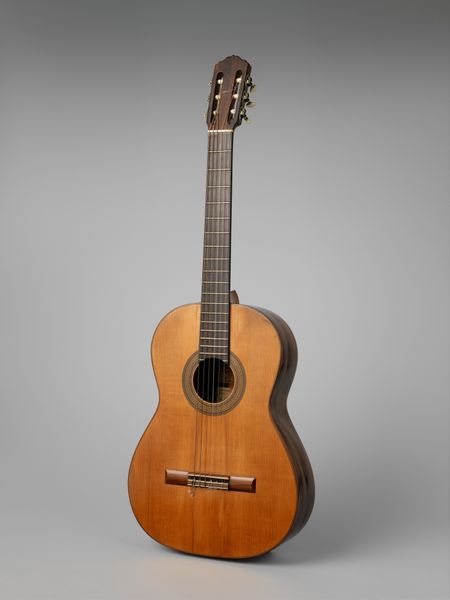
metal, wood
#
metal
#
wood
Dimensions: height 67.0 cm, width 29.0 cm, depth 7.5 cm
Copyright: Rijks Museum: Open Domain
Editor: Here we have an English guitar made around 1770, crafted with wood and metal by Longman & Broderip. It has a fascinating form. What sociopolitical narratives might we unpack from such an instrument? Curator: This guitar speaks volumes about the social mobility and cultural aspirations of 18th-century England. It was a period of immense societal shift, fueled by colonialism and mercantilism. Think about who was likely playing this instrument, and in what context. Does this say anything about the growing middle class and their consumption of luxury items and leisure activities? Editor: It looks quite ornate, almost fragile. Did its design perhaps have some relation to gender? Curator: Absolutely! The English guitar was hugely popular amongst women. Consider its lighter construction, making it easier to hold and play than, say, a lute. In that era, what was the prevailing view of women playing music? Editor: Music served as a form of domestic accomplishment and refinement? A demonstration of virtue for marriageability perhaps? Curator: Exactly. It also reveals a complex tension. The guitar provided women a creative outlet, a voice within the confines of their domestic sphere. But it also reinforced societal expectations and limited their roles. What statement is made when they can create, but only within defined limits? Editor: So the beauty and apparent fragility are not merely aesthetic but rather reveal societal pressures and constraints. That gives me much to consider. Curator: The English guitar, then, becomes a powerful symbol of both female agency and subjugation in a rapidly changing society. And such instruments helped shape culture as we know it now, which continues to inform contemporary societal expectations around gender and class.
Comments
No comments
Be the first to comment and join the conversation on the ultimate creative platform.
